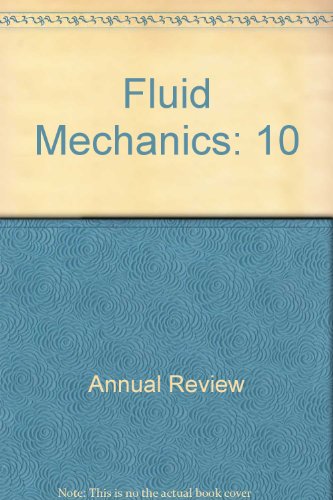液滴动力学中的气体微膜:液滴何时反弹?
IF 30.2
1区 工程技术
Q1 MECHANICS
引用次数: 0
摘要
在过去的十年里,实验技术的进步使人们对薄气体膜的动力学如何深刻影响液滴的行为有了显著的发现。液滴撞击到固体上可以在空气膜上滑动,从而从固体上反弹。对于液滴-液滴碰撞,这种阻止聚结的效应早就被认识到了。值得注意的是,控制这些现象的精确物理机制一直是一个激烈争论的话题,导致了实验、理论和计算方法的协同作用。这篇综述试图综合我们对液滴何时以及如何反弹的知识,重点关注(a)预测合并过渡所需的非常规微尺度和纳米尺度物理,以及(b)计算模型的开发。这自然导致了对一系列其他主题的探索,如雷登弗罗斯特效应和动态润湿,其中气体膜也发挥着突出作用。《流体力学年度评论》第56卷预计最终在线出版日期为2024年1月。请参阅http://www.annualreviews.org/page/journal/pubdates用于修订估算。本文章由计算机程序翻译,如有差异,请以英文原文为准。
Gas Microfilms in Droplet Dynamics: When Do Drops Bounce?
In the last ten years, advances in experimental techniques have enabled remarkable discoveries of how the dynamics of thin gas films can profoundly influence the behavior of liquid droplets. Drops impacting onto solids can skate on a film of air so that they bounce off solids. For drop–drop collisions, this effect, which prevents coalescence, has been long recognized. Notably, the precise physical mechanisms governing these phenomena have been a topic of intense debate, leading to a synergistic interplay of experimental, theoretical, and computational approaches. This review attempts to synthesize our knowledge of when and how drops bounce, with a focus on ( a) the unconventional microscale and nanoscale physics required to predict transitions to/from merging and ( b) the development of computational models. This naturally leads to the exploration of an array of other topics, such as the Leidenfrost effect and dynamic wetting, in which gas films also play a prominent role. Expected final online publication date for the Annual Review of Fluid Mechanics, Volume 56 is January 2024. Please see http://www.annualreviews.org/page/journal/pubdates for revised estimates.
求助全文
通过发布文献求助,成功后即可免费获取论文全文。
去求助
来源期刊
CiteScore
54.00
自引率
0.40%
发文量
43
期刊介绍:
The Annual Review of Fluid Mechanics is a longstanding publication dating back to 1969 that explores noteworthy advancements in the field of fluid mechanics. Its comprehensive coverage includes various topics such as the historical and foundational aspects of fluid mechanics, non-newtonian fluids and rheology, both incompressible and compressible fluids, plasma flow, flow stability, multi-phase flows, heat and species transport, fluid flow control, combustion, turbulence, shock waves, and explosions.
Recently, an important development has occurred for this journal. It has transitioned from a gated access model to an open access platform through Annual Reviews' innovative Subscribe to Open program. Consequently, all articles published in the current volume are now freely accessible to the public under a Creative Commons Attribution (CC BY) license.
This new approach not only ensures broader dissemination of research in fluid mechanics but also fosters a more inclusive and collaborative scientific community.

 求助内容:
求助内容: 应助结果提醒方式:
应助结果提醒方式:


